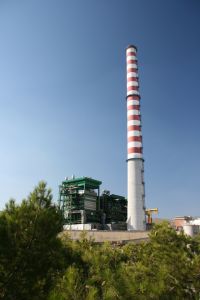
![]()
index.html>Waste Incineration Plants Revealed Waste Incineration Plants Revealed
Waste Incineration Plants burn household and hazardous waste from trade and industry, thus generating thermal and electro energy. Waste incineration and composting have taken on an even greater profile throughout the world through the development of technologies which divert waste away from landfill. These new technologies are expensive and local governments, when they recently realized how much they were going to pay to operate the incinerators, realized they could go bankrupt. It also became a corruption issue, because the local press exposed anomalies in the Waste Contractor’s business practices. In a recent incident local citizens were concerned that harmful substances may be in yards and houses due to the fire. With the assistance of the City of El Dorado, 10 locations were identified for sampling. Waste incineration constitutes the greatest point source of emission of many low level toxic emission substances. Waste
incineration also leads to emissions to water from wet scrubbers and from the landfill site where the slags and ashes are landfilled. Noise and
odour may be a problem related to waste incineration, but it is considered a small problem. Waste incineration is a process that requires a great
deal of electricity, but there are two ways in which operators of waste incineration plants can reduce electricity consumption: through the use
of more energy-efficient technologies, and by optimising their processes and systems. And there is plenty of potential here, as a number of
energy analyses of waste incineration plants have revealed. Emission certificates were introduced into the European Union effective January 1, 2005, as part of the drive to implement the Kyoto Accords, which aim to reduce the emission of greenhouse gases. The certificates are allotted within the framework of the National Allotment Plan, depending on the level of a company’s emissions. Emissions of particulate matter would be 33% and carbon monoxide would be 60% higher. Dioxins are found throughout the world and are released into the environment as contaminants in other products. Dioxins are also formed in trace amounts in combustion processes and so are found in the atmosphere. Dioxins have become a major social problem in developing countries lacking emissions controls. In order to tighten dioxin-related regulations, the Air Pollution Control Law Enforcement Ordinance was partially amended, as a result of which, dioxin substances are now classified as pollutants. Heat is recovered from the hot flue gases before they are scrubbed to remove unacceptable chlorides and oxides of sulphur and nitrogen. The recovered heat is used to produce steam which is used either as a source of industrial heat or to drive steam turbines. Heat insulating plates formed of heat insulating members, such as asbestos boards, are fixed on an inner surface of the upper portion. The ventilating ports are provided with rectangular plate type dampers punched with an aperture ratio of about 60%, and fixed pivotally at their respective upper parts to the portions of the casing which correspond to upper parts of the ventilating ports , whereby the dampers are set so as to be able to be opened and closed. Fuel blending facilities mix a variety of liquid and solid wastes to create a fuel that is then introduced into the kiln of the cement plant. The burning of hazardous wastes in cement kilns creates two main waste ‘products’ air emissions from the stack, and cement kiln dust leftover from the production of cement. Fuel derived from waste can be then used either as motor fuel or for heat, steam or electricity generation.
|
Biomedical Waste Incineration Waste Incineration Plants Revealed Sewage Sludge Incineration Mechanical Biological Treatment Incineration and Acidity after NaoH Scrubbers Waste Water Treatment Technology for Organic Waste Disclaimer Privacy Statement |
(c) 2008 Waste Technologies Multi-Site
